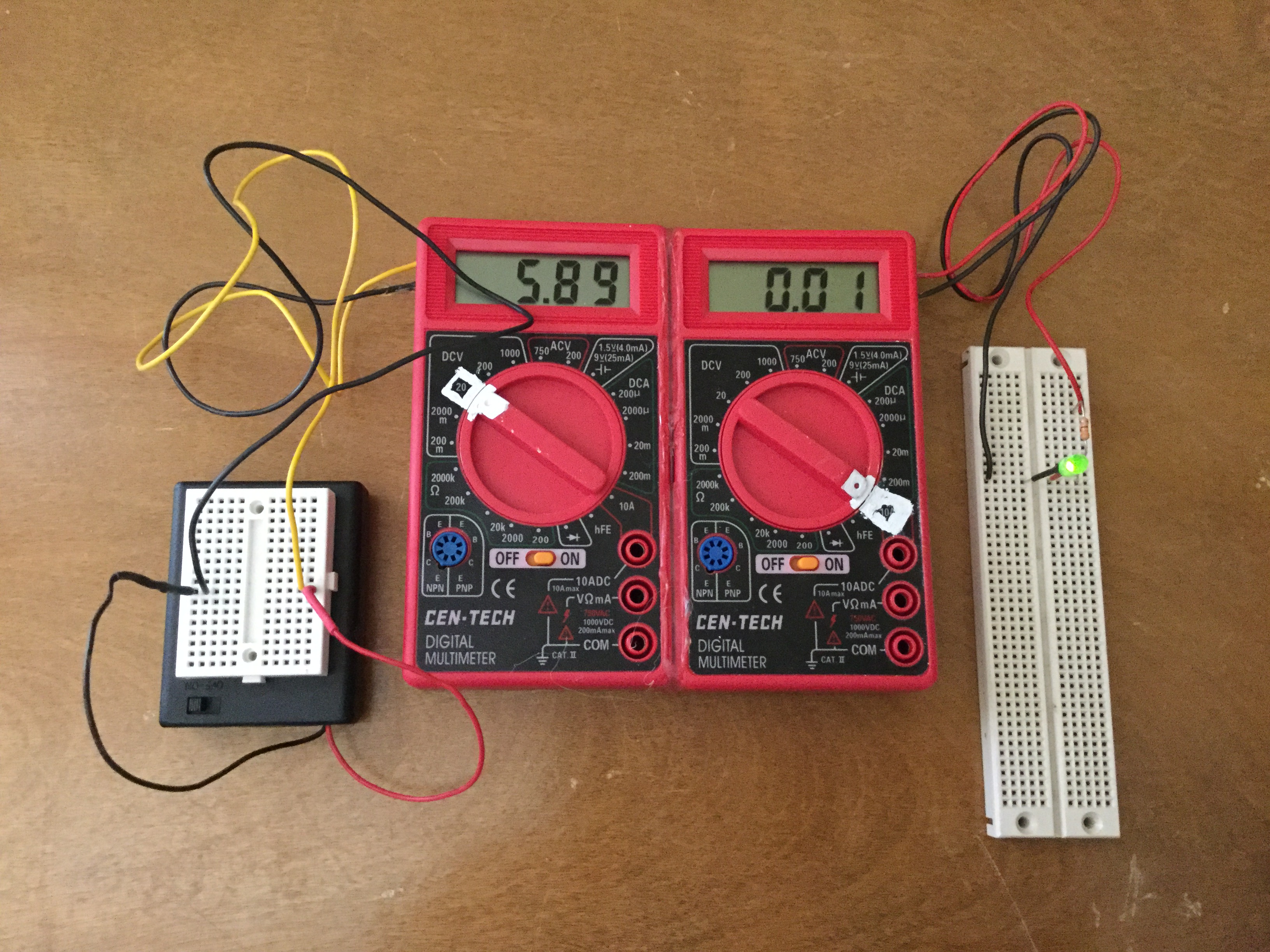Watt Meter

See the instructable web site https://www.instructables.com/howto/wattmeter/
Build
Instructions for building this tool at . The anticipated cost of materials to build this tool is Less than $20. It may take A few hours.
Borrow
Buy
| Description |
Measuring power (in watts) in a low voltage (up to 50 volts) system. The Watt meter is of simple design, consisting of 2 cheap multi-meters, the first connected up in series with the circuit to measure current, the second connected in parallel to measure voltage. To use the watt-meter you connect the wires on one side (the left) of the meters to your power source and the other set of wires on the other side (right) to your circuit. To find wattage you simply multiply the 2 number together, and voila the wattage! The cost. If one can assume that the person building the Wattmeter is a hobbyist of some sort, You need 2! so that would be $11.98. BUT Harbor Freight always has these on offer at $3.99, sometime less. And once in a while, they give them away FREE. Yes you read that correctly FREE. In fact the total cost to me for the Instructable was ZERO. Don't you just love that number $0.00 !!! Warning Dr Smith!!!!. Please read the warnings on the Instructable WRT plugging in the test probes, etc. Notes: 0 to 50 volts, 0 to 10 amps This tool is recommended for lending libraries. |
|---|---|
| Used by these projects | none. |
| Ideal Age Group | Elementary school (6 - 10 years), Middle school (11 - 13 years), High school (14 - 17 years), College, Graduate students, Adults, Families, Seniors |
| Training | Learning materials are available online. |
| Use considerations | Assembly is required. Callibration is required. This tool relies on lab processing. This tool require consumable materials (e.g. batteries, light bulbs, etc.). |
| Size & weight |
Small: This tool would fit in a 6 inch cube. Less than 13oz (a full soda can weighs a little less than 13oz) |
| Expected lifetime | Should last at least a year |
| Topics | Science Policy, Education, Computers & Technology, Physics |
| Activities | At home, At a science center, zoo or aquarium, In the car, Emergency Response |
| Tool updated | April 12, 2017, 12:39 p.m. |


Or Sign Up with…